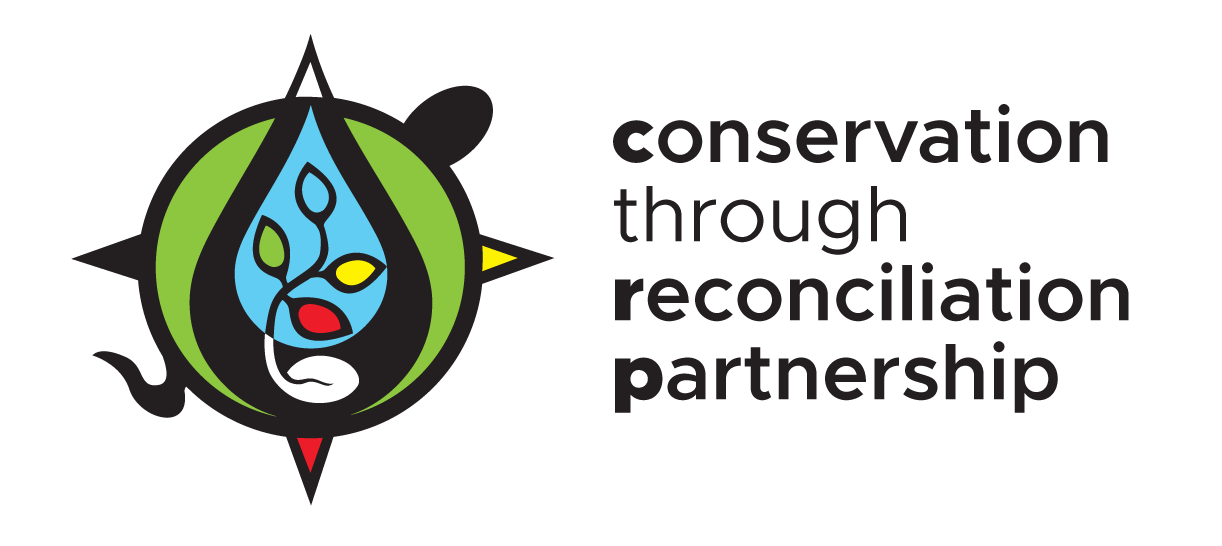Urban parks are ‘landscapes of opportunity’ for Indigenous conservation leadership
A photo of a cityscape with trees in the foreground.
By Robin Roth and Faisal Moola, Conservation through Reconciliation Partnership Leadership Circle
In early August 2021, the Canadian Government announced a $130 million commitment to create a network of urban National Parks across the country. This commitment is a step forward in recognizing and valuing urban parks and forests for their ecological, educational, socio-cultural, and health benefits. While the announcement names Indigenous partners in a list of groups to “collaborate with,” it falls short in recognizing the potential for urban parks to advance Indigenous self-determination and reconciliation.
Canadian cities are situated on multiple, diverse Indigenous territories, and more than half of Indigenous Peoples live in urban areas. Skyscrapers and multi-lane highways aside, Indigenous Peoples continue to hold connections, ownership, and responsibility to these landscapes. However, racism and stereotyping prohibit urban Indigenous Peoples from creating safe, appropriate spaces to maintain and cultivate their identities, communities, languages, and cultures, which are intertwined with relationships and ties to territories.
Urban parks can be landscapes of opportunity for Indigenous rights, responsibilities, and relationships to thrive. However, Indigenous Peoples need to be front and centre in the planning, development, and management of urban parks. It is through the establishment of Indigenous Protected and Conserved Areas (IPCAs) that this can be achieved. By their very definition, IPCAs are Indigenous-led. They are not a product of consultation or engagement with Indigenous Peoples. Indigenous Nations determine their vision, objectives, boundaries, management plans and governance structures for IPCAs as part of their exercise of self-determination.
IPCAs present a unique opportunity for Indigenous Peoples to conserve, protect, and reconnect with their territories through their diverse laws, governance, and knowledge systems. They are places and spaces for healing among the people, plants, and animals that inhabit them.
Urban IPCAs would create safe spaces for Indigenous Peoples to re-establish relationships with their cultures, languages, and livelihoods within Canada’s cities. And just like any urban park, an urban IPCA would be open for the enjoyment of all. They would also create opportunities for the public to learn about Indigenous approaches to conservation and advance reconciliation by cultivating greater mutual understanding.
A glimpse of this potential can be found in Rouge National Urban Park, where it was recently announced that a visitor’s centre will be designed in partnership with the First Nations Advisory Circle to engage and educate the public about the park’s past and present relationships with Indigenous Peoples. While this is a step in the right direction, we believe more can and should be done to ensure Indigenous Peoples are leading the way, going well beyond advice and consultation.
If rural IPCAs are any indication, urban IPCAs would foster healthy relationships with nature, including harvesting, as a core principle and would strengthen Indigenous and non-Indigenous connections to land and waters. This is a model that departs from state-led protected areas, which seek to protect nature as separate from humans and has been shown to be as, if not more, effective at meeting conservation objectives.
This is why several researchers and partners in the Conservation through Reconciliation Partnership are beginning to document existing and potential opportunities for Indigenous-led urban conservation. The goal is to present case studies of urban IPCAs to inform future conserved and protected areas in urban parks and forests in the spirit of reconciliation.
While IPCAs and other Indigenous-led conservation initiatives have generally taken hold in rural environments, they offer models for reconciliation, ecological restoration, and public education that can be adapted to urban settings. For example, located on the traditional territory of Algonquin and Mohawk Peoples in Southeastern Ontario, the Healing Place offers a shared public space meant to strengthen relationships between Indigenous and non-Indigenous communities, knowledge systems, and conservation objectives.
On Vancouver Island, Tla-o-qui-aht Tribal Parks are solely governed by Tla-o-qui-aht First Nation and established under Tla-o-qui-aht laws. Through their Allies Program, eco-tourism initiatives, and partnerships, Tla-o-qui-aht Tribal Parks are engaging the public, local businesses, academic institutions, and others to advance stewardship, ecological restoration, and community economic development.
For both initiatives, Indigenous Nations are driving the vision, strategy, and decisions, and bringing in diverse perspectives and partners to support their efforts through a reciprocal and collaborative relationship. Since the announcement of the National Urban Parks Program in August, it is our understanding that Parks Canada has begun the process of meaningful relationship-building with Indigenous Nations. We look forward to seeing how Indigenous leadership will be prioritized throughout this process.
According to the Federal government, Parks Canada aims to “Work closely with Indigenous partners to ensure national urban parks provide space for Indigenous stewardship, promote Indigenous voices and stories, and offer opportunities for connections to lands and waters based on Indigenous knowledge and values.”
For Canada to achieve its vision for reconciliation and targets for biodiversity protection, the Federal government and its municipal partners must go beyond “working closely” and “engaging respectfully” within an advisory capacity, and step aside for Indigenous Nations and governments to take a lead in the establishment of urban parks and protected areas. Doing so will contribute to healthy and thriving urban communities for years to come.
Canada can and should be a role model in innovative approaches to conservation. But it can’t be done without Indigenous leadership.


